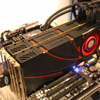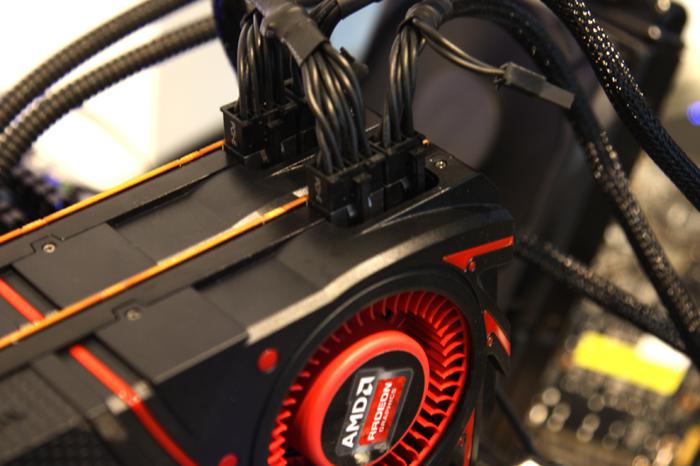Power Consumption
Hardware installation
Installation of any of the AMD Radeon cards is really easy. Once the card is seated into the PC make sure you hook up the monitor and of course any external power connectors like 6 and/or 8-pin PEG power connectors. Preferably get yourself a power supply that has these PCIe PEG connectors native (converting them from a Molex Peripheral connector anno 2013 we feel is a no-go).
Once done, we boot into Windows, install the latest ATI Catalyst drivers and after a reboot all should be working as for Crossfire a popup appears that CFX mode has been enabled. No further configuration is required or needed unless you like to tweak the settings, for which you can open the Catalyst Control Center.
Power Consumption
Let's have a look at how much power draw we measure with this graphics card installed. The methodology: We have a device constantly monitoring the power draw from the PC. We simply stress the GPU, not the processor. The before and after wattage will tell us roughly how much power a graphics card is consuming under load. Our test system is based on a power hungry six-core Intel Core i7-3960X Extreme Edition Sandy Bridge-E based setup on the X79 chipset platform. This setup is overclocked to 4.60 GHz on all cores. Next to that we have energy saving functions disabled for this motherboard and processor (to ensure consistent benchmark results). We'll be calculating the GPU power consumption here, not the total PC power consumption.
Power consumption AMD Radeon R9-290
- System in IDLE = 128W
- System Wattage with GPU in FULL Stress = 372W
- Difference (GPU load) = 244W
- Add average IDLE wattage ~10W
- Subjective obtained GPU power consumption = ~ 254 Watts
Power consumption AMD Radeon R9-290 2-way Crossfire
- System in IDLE = 130W
- System Wattage with GPU in FULL Stress = 603W
- Difference (GPU load) = 473W
- Add average IDLE wattage ~20W
- Subjective obtained GPU power consumption = ~ 493 Watts
Mind you that the system wattage is measured at the wall socket side and there are other variables like PSU power efficiency. So this is a calculated value not a precise measurement, albeit a very good one.
Above, we have a chart of relative power consumption. Again the Wattage shown is the card with the GPU(s) stressed 100%, showing only the peak GPU power draw, not the power consumption of the entire PC and not the average gaming power consumption.
Here is Guru3D's power supply recommendation:
- AMD Radeon R9 290 - On your average system the card requires you to have a 550~600 Watt power supply unit.
- AMD Radeon R9 290 Crossfire - On your average system the cards require you to have a 800 Watt power supply unit as minimum.
If you are going to overclock GPU or processor, then we do recommend you purchase something with some more stamina. There are many good PSUs out there, please do have a look at our many PSU reviews as we have loads of recommended PSUs for you to check out in there. What would happen if your PSU can't cope with the load:
- bad 3D performance
- crashing games
- spontaneous reset or imminent shutdown of the PC
- freezing during gameplay
- PSU overload can cause it to break down
Let's move to the next page where we'll look into GPU heat levels and noise levels coming from this graphics card.



